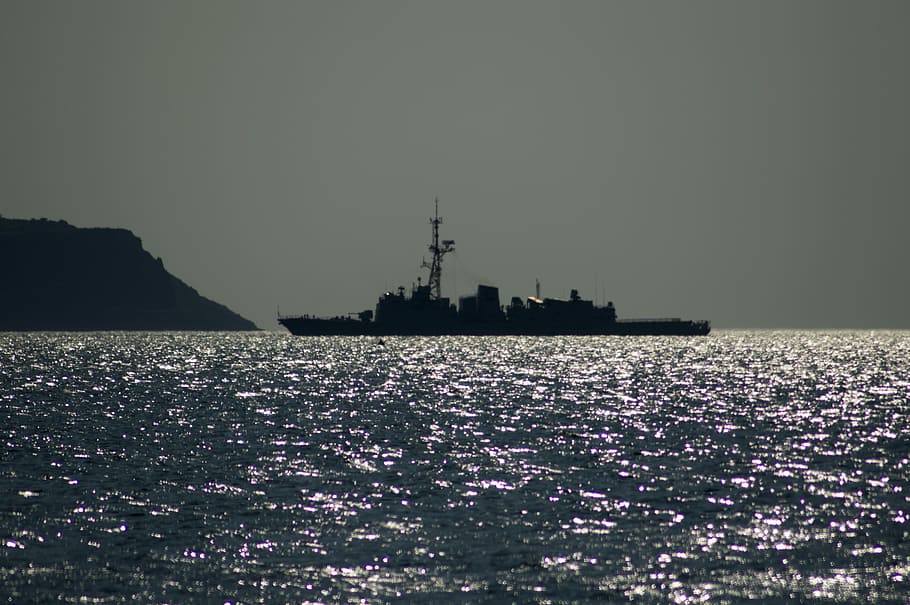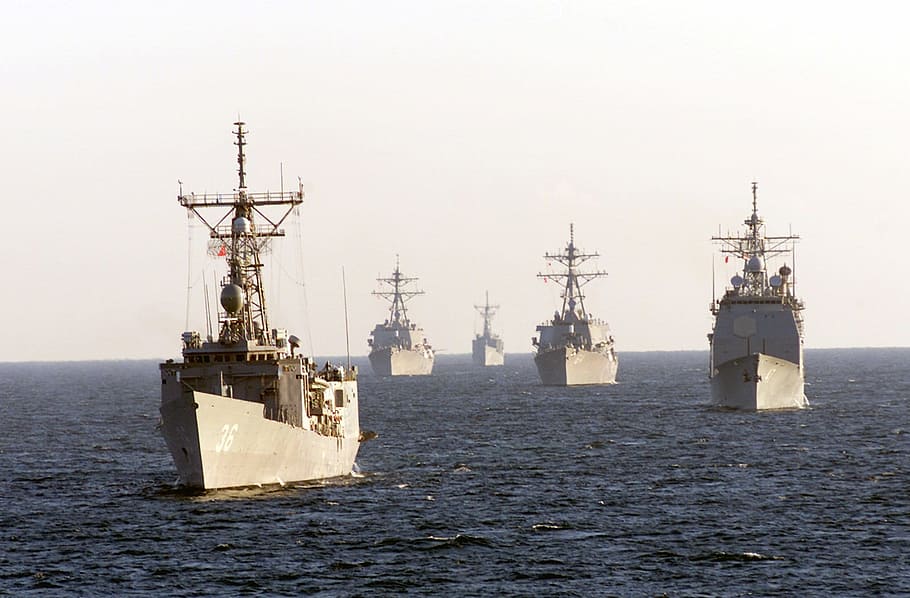リスク対応策 2021.05.28
RM63 復原力不足 Deficiencies in resilience
目次
For those who prefer to read this column in English, the Japanese text is followed by a British English translation, so please scroll down to the bottom of the Japanese text.
昨年2020年3月11日、本コラムに投稿した「RM 25ー「三陸海岸大津波」 “Sanriku Coast Giant Tsunami”」のなかで紹介した「三陸海岸大津波(文春文庫)」。著者の吉村昭氏は、綿密な取材による豊富な史料をもとにした多彩な記録文学、歴史文学の分野で著名であるが、その一書に6編の短編からなる「空白の戦記」(新潮文庫刊)がある。
その「顚覆」の編に描かれているのが、1934年(昭和9年)3月12日に行われた旧日本海軍の水雷戦隊の夜間演習中に佐世保港外で起きた、死者72名、行方不明者28名を出した、水雷艇「友鶴」の転覆事故である。
事故原因の究明作業のなかで明らかになった艦艇の設計理念上の重大な不備は、その翌年、演習中の第四艦隊が台風に遭遇、41隻中19隻が損傷、艦首切断や艦橋破壊などによって死者54名を出した「第四艦隊事件」とともに日本海軍の設計思想を揺るがし、その後の艦艇設計に大きな影響を及ぼした「友鶴事件」と呼ばれるものである。

1.ロンドン海軍軍縮条約
1914年、第一次世界大戦が勃発するとアメリカ合衆国は当初中立を保ったが、ドイツが展開した通商破壊戦により自国の海外貿易が重大な脅威に晒される現実を目の当たりにすると海軍力整備が国民から強く求められるようになった。
一方、日露戦争において旧日本海軍は、戦史に名高い日本海海戦の完勝によってロシア海軍を実質的に壊滅させ、世界第3位の海軍国に躍進した。軍隊は常に「仮想敵国」を定め軍備の整備をおこなう宿命を有する組織である。ロシア太平洋艦隊を撃破したことにより「仮想敵国」を変更する必要に迫られた旧日本海軍は、折から対立が深まりつつあった米国海軍を新たな仮想敵として定め、対抗戦力の整備目標を検討、1907年(明治40年)の「帝国国防方針」では「国防所要兵力」として「八八艦隊」(戦艦8隻・装甲巡洋艦8隻)を決定した。
しかし、日露戦争直後1906年に進水した英国海軍の巨大戦艦「ドレッドノート」は、その「巨砲」と「蒸気タービンによる高速化」で世界に大きな衝撃をもたらし、以後の戦艦のタイプを「ドレッドノート (dreadnought)」の「ド」から「弩級(どきゅう)戦艦」とそれ以外に別けさせる結果を生んだ程の巨艦であった。更に、その後「弩級戦艦」を上回る「超弩級戦艦」の誕生さえみることになり、軍艦、とりわけ戦艦の建造コストは膨大となっていった。この結果、前述の「八八艦隊」計画は、年間の維持費だけで当時の日本の国家予算の4割となり、とても単年度では到底進めることができない規模となり、年度を超えて段階的に推進されることになった。
しかし、それをもってしても「建艦競争」の財政負担は国家財政に重くのしかかった。この状況は列強諸国においても同様であり、各国とも財政上の問題から「歯止め」をかけるタイミングを図っていた。その流れのなかで1922年「ワシントン海軍軍縮条約」の締結をみることになり、戦艦・航空母艦等の主力艦の保有制限が決められ、主力艦の建造が抑制されることとなった。しかし、当然のごとく流れは規制されない「非主力艦」の建造競争に向かっていった。
その軍拡競争に歯止めを与えるべく1930年(昭和5年)に開催された会議が「ロンドン海軍軍縮会議」であった。「補助艦」と呼ばれた非主力艦の保有量等の制限を主な目的とした国際会議であった。
この条約締結を受け同年10月1日開催された枢密院本会議では、同条約が可決され批准されたが、海軍内部では条約に賛成する「条約派」と反対する「艦隊派」という対立構造が生まれた。更に大日本帝国憲法第11条の「天皇ハ陸海軍ヲ統帥ス」(統帥大権)の条文から、「政府が統帥権に関する事項を天皇の承諾無しに決めたのは憲法違反だとする『統帥権干犯問題』」が提起され、このことを境に日本は「軍部の暴走」を押さえられなくなる事態にまで発展、太平洋戦争へと向かっていくことになったのである。
2.友鶴事件
冒頭記した「友鶴」が参加した夜間演習の当日は荒天で波浪が非常に高かった。小艦艇である水雷艇は波浪の影響を受けやすいものであったが、「計算上は艦体傾斜90度から110度までの傾斜でも転覆しないような復原力を持たせる設計が施されている」とされていた。しかしながら、「友鶴」は僅か40度程度の傾斜で転覆、総員113名中死者行方不明者100名を出すという大惨事となったのである。
昨年2020年10月17日、本コラムに投稿した「RM 48ーNHK「エール」の歴史的背景 The Historical Background of NHK’s Yell」のなかで紹介した「一軍人の生涯 提督・米内光政(光和堂刊)」にもその高潔な人柄が描かれている、当時、佐世保鎮守府司令長官であった米内光政が徹底した調査を求めた。その結果、「設計データ」上では充分な復原力を保持しているとされた友鶴は、実は過重な装備により重心上昇(トップヘビー)となり、「復原力不足」をきたし、その結果事故が起きたことが判明した。その背景は、海軍の設計部門では、現場の装備要求にあまりにも追従して「要求通りの装備」を載せた艦艇を建造していたことにあった。このような重大な欠陥を抱えた艦船を多数建造したその一隻が「友鶴」であった。
「空白の戦記」(吉村昭著 新潮文庫刊)「顚覆」の編には、その顛末が以下のように記されている。
その後、「友鶴」顚覆事故は、海軍大将 野村吉三郎を査問会委員長として海軍技術専門家を結集し、その事故原因を徹底的に追及した。当然、艇長 岩瀬奥市 少佐の操艦の拙さによるものではないかという疑いもあったが、岩瀬 艇長は海上経験も豊かで、調査の結果、事故原因は艇長の責任にはなく、すべて艦そのものの構造によるものであることがあきらかになった。すでに「友鶴」の完成以前に建造された同型艦「千鳥」の建造途中に多くの欠陥が 発見され、大規模な修正がほどこされて「友鶴」もそれにしたがって竣工されたのだが、「千鳥」のもつ欠陥は致命的なものとしてそのまま「友鶴」に残されていたのだ。査問会は、次のような結論を出した。
原因…
船体・兵器、機関ノ配置上、重心点ノ位置高ク、且其ノ重量分布ニ於テ艇ノ重心点ヲ通ズル縦軸線ヨリ離レヲル物件ノ重量大ナル為、動揺慣性大トナリ、当時ノ風浪ノ状況ニ於テ左舷ニ大傾斜起リシ際之ニ対抗スル復原力不足セルコト
所見…
一、ソノ安定性ノ極メテ不良ナルヲ立証スルモノニシテ、実用ニ適セザルモノト認ム。而已ナラズ近時建造ノ艦艇ガ一般ニ安定性不良ノ傾向アルハ洵ニ寒心ニ堪ヘザル所ニシテ、本事件ト共ニ部内人心ニ与ヘタル不安ノ印象ハ測リ知ルベカラザルモノアリ
二、千鳥型水雷艇ハ、安定性ニ著シキ欠陥アリ。徹底的改善ヲ行フニ非レバ実用ニ適セザルモノト認ム。
これは、千鳥型水雷艇の造艦設計に対する徹底した批判で、「友鶴」の第一号 艦である「千鳥」設計者である高名な某造船士官は、その衝撃のため職を退き、やがて巷間で不遇の死をとげた。

3. 友鶴事件の背景
「ロンドン海軍軍縮条約」により、主力艦(戦艦、航空母艦)だけでなく補助艦艇(巡洋艦や駆逐艦)の建造にも制限を受けることとなったため、条約で制限されない新造艦艇の建造には、過剰とも思える「現場からの要望」を取り入れることになった。その結果、「無理な設計、そして建造」となったのである。
具体的には、ロンドン海軍軍縮条約で規制されていたのは基準排水量600トン以上の艦船であったため、基準排水量600トン以下の船体に基準排水量1500トン以上の駆逐艦の武装を施した「小型駆逐艦ともいうべき水雷艇」を建造したのである。その一隻が、「友鶴」であった。当然、重武装によって甲板上の重さがそれまで建造された水雷艇の数倍もある艦船となった。いわゆる「トップヘビー構造」の艦である。
その設計責任者は、造船少将藤本喜久雄氏であった。氏は、世界の注目を集めた多くの最新艦の設計を行い、海外でも著名な軍艦設計の権威者であった。しかし、なぜそのような権威者が、「転覆するような軍艦の設計」をおこなったのか。ロンドン軍縮条約では、日本海軍が許容された総トン数は「対米英7割」であった。そのため、「トン数以上の重装備」という極端な用兵上の要求が発生、それを「設計・造艦側」は、「受けて、通してしまった」ということである。その結果が、過大武装を載せた「復元性の不足という欠陥」を持った多くの艦艇を建造することになったのである。
今回のまとめ
この「友鶴事件」の本質的な問題は、何も90年前の旧日本海軍という限定された「領域」でのみ起きることではない。現代の企業でも起きる可能性のある問題を指摘している事件と言えよう。
「現場にはこういう問題がある、だから本社はその問題を解決する手段を考えるべきである」という要求が本社に飛んでくる。本社では「なんとか要望を聞こうと努力する」、「適正な判断」からそういう方向に思考が過度に向いた段階で、「友鶴事件を起こしたリスクが発生している」と考えるべきであろう。しかし「そのような検証は『現場の声』」というものにかき消されることが多いのではないだろうか。
そのようにリスクを顕在化させない手段が、現場、本社が、「同じ基準」でモノゴトを検討、判断していくことである。それが、「リスクマネジメント基準の明確化と徹底」である。
モノゴトが起きて進んでいく場合には、その動きには必ず「影」として「リスク」が発生すると考える「思考パターンの体系化」が必須である。それなくしては、「属人的な思考と判断」になり大きな犠牲をともなうことになりかねない方向にモノゴトが進んでいく、この友鶴事件はそう教えてくれているのではないだろうか。グローバル・リンクがキャプティブの設立を視野にした本格的なリスクマネジメントの実行を強く提唱している理由がここにあるのである。
執筆・翻訳者:羽谷 信一郎
English Translation
RM (Risk Management) 63 ー Deficiencies in resilience
Akira Yoshimura, the author of the book “Sanriku Coast Giant Tsunami”, which I wrote about in my column “RM 25 – Sanriku Coast Giant Tsunami” on March 11, 2020, is renowned for his diverse documentary and historical literature based on a wealth of meticulously researched historical documents. One of his most famous works is “Kuhaku no Senki” (The History of Blank War), a collection of six short stories published by Shincho Bunko.
In the “tumbler” section of the book, he describes the capsizing of the minesweeper Tomotsuru, which occurred outside Sasebo harbour on 12 March 1934 during a night-time exercise by the former Japanese Navy’s mine squadron, resulting in 72 deaths and 28 missing persons.
In the course of investigating the cause of the accident, it became clear that there were serious flaws in the design principles of the ships.The following year, the Fourth Fleet during the exercise encountered a typhoon, 19 out of 41 ships were damaged, the bow was cut off and the bridge was destroyed, resulting in 54 fatalities, together with the “Fourth Fleet Incident”, which shook the design philosophy of the Imperial Japanese Navy, and had a major impact on subsequent ship design, and is known as the “Tomotsuru Incident”.
In 1914, at the outbreak of World War One, the United States of America initially maintained neutrality. However, when it witnessed the reality that its own overseas trade was under serious threat due to the trade destruction warfare deployed by Germany, there was a strong public demand for the development of naval power.
On the other hand, in the Japanese-Russo War, the former Imperial Japanese Navy practically destroyed the Russian Navy by the complete victory in the Battle of the Sea of Japan, which is famous in the military history, and soared to the third largest naval power in the world. The military is an organisation that has always been destined to define its “virtual enemy” and build up its armaments.Having defeated Russia’s Pacific Fleet, the former Imperial Japanese Navy was forced to change its “virtual enemy”, and designated the United States Navy, with which it had been increasingly at odds, as its new virtual enemy. In the 1907 Imperial Defence Policy, it was decided that the “Eight-eight Fleet Fleet” (eight battleships and eight armoured cruisers) would be the “force required for national defence”. In the 1907 Imperial Defence Policy, it was decided that the “Eighteen Fleet” (eight battleships and eight armoured cruisers) would be the “force required for national defence”.
However, the Royal Navy’s huge battleship Dreadnought, launched in 1906 just after the Russo-Japanese War, shocked the world with its “huge guns” and “high speed using steam turbines”, and led to a distinction between ” Dreadnought” battleships and other types of battleships. Later on, we even saw the birth of the “super Dreadnought battleship” over the “Dreadnought battleship”, the cost of building warships, especially battleships, became enormous. The aforementioned “Eight-eight Fleet” project, the annual maintenance costs alone amounted to 40% of the Japanese national budget at the time, and it was impossible to proceed with the project in a single year, so it was promoted in stages over the years.
However, even with this, the financial burden of the “shipbuilding race” weighed heavily on the national finances. The same situation prevailed among the powers, and each country was trying to find the right moment to “put a stop” to the financial problems. In 1922, the Washington Naval Disarmament Treaty was signed, which limited the number of battleships and aircraft carriers that could be built. Naturally, however, the trend was towards a race to build unrestricted “non-major ships”.
The London Conference on Naval Disarmament was held in 1930 to put a stop to this arms race. The main purpose of this international conference was to limit the number of non-major ships, known as “auxiliary ships”.
Following the conclusion of this treaty, the Privy Council plenary session held on 1 October of the same year passed the treaty and ratified it, but within the navy a structure of conflict emerged between the “treaty faction” in favour of the treaty and the “fleet faction” opposed to it.In addition, Article 11 of the Imperial Japanese Constitution, which states that “the Emperor shall have general authority over the Army and Navy”, led to the “problem of the drying up of the general authority”, which claimed that it was a violation of the Constitution for the government to decide matters concerning the general authority without the Emperor’s consent.This led to a situation in which Japan could no longer hold back the “outburst of the military”, and the country headed for the Pacific War.
2. The Tomotsuru Incident
On the day of the night exercise in which the Tomotsuru participated, as mentioned at the beginning of this column article, the weather was stormy and the waves were very high. As a small naval vessel, the minesweeper was susceptible to the effects of the waves, but “according to calculations, the ship was designed to have enough resilience to prevent it from capsizing even at an inclination of 90 to 110 degrees”. However, the Tomotsuru capsized at an inclination of only 40 degrees, resulting in a catastrophe that left 100 people dead or missing out of a total crew of 113.
The historical background of NHK’s Yell (RM 48), which I wrote about in this column on 17 October 2020, describes the noble character of Admiral Mitsumasa Yonai. Mitsumasa Yonai, then commander-in-chief of the Sasebo township, requested a thorough investigation. As a result, it was discovered that the Tomotsuru, which according to the “design data” had sufficient resilience, had in fact been over-equipped, resulting in an elevated centre of gravity (top-heavy) and insufficient resilience, which resulted in the accident. The background to this was that the navy’s design department had been following the equipment requirements of the field too closely, building ships with “equipment as required”. One of the many ships built with such serious flaws was the “Tomotsuru”.
In the “tumbler” section of “Kukan no Senki” (The History of the Blank War), written by Akira Yoshimura and published by Shincho Bunko, the details are described as follows.
Thereafter, the “Tomotsuru” accident was thoroughly investigated by a group of naval technical experts, headed by Admiral Kichisaburo Nomura, and the cause of the accident was thoroughly investigated. Naturally, there were suspicions that the accident was due to poor ship-handling by the ship’s captain, Major Okuichi Iwase, but Captain Iwase had a wealth of experience at sea, and as a result of the investigation it became clear that the cause of the accident was not the captain’s fault, but rather the structure of the ship itself. A number of defects had already been discovered during the construction of same type of ship the Chidori, which had been built before the completion of the Tomotsuru, and extensive modifications had been made and the Tomotsuru completed accordingly, but the fatal flaws of the Chidori had remained in the Tomotsuru. The Board of Inquiry came to the following conclusions
Cause…
Due to the position of the hull, weapons and engines, the centre of gravity was high, and the weight of the weight distribution was far from the longitudinal axis through the centre of gravity of the boat.
Findings…
I. The stability of the ship is proved to be very poor, and it is not suitable for practical use. The fact that naval vessels built in recent years have generally tended to have poor stability is truly distressing, and the uneasy impression that this incident has given to the minds of the people in the department cannot be measured.
2. The stability of the Chidori type torpedo boat is seriously defective. Unless thorough improvements are made, they will not be suitable for practical use.
This was a thorough criticism of the design of the Chidori type torpedo boat, and a famous shipbuilding officer, the designer of the first “Chidori” ship of the “Tomotsuru” series, was so shocked by the incident that he retired from his post and died an untimely death.
3. Background of the Tomotsuru Incident
Under the London Naval Disarmament Treaty, restrictions were placed not only on the construction of mainline ships (battleships and aircraft carriers), but also on auxiliary ships (cruisers and destroyers), so that the construction of new ships not restricted by the treaty was subject to what seemed to be excessive “requests from the field”. As a result, “unreasonable design and construction” was the result.
Specifically, the London Naval Disarmament Treaty restricted the construction of ships with a standard drainage capacity of 600 tons or more, so they built “small destroyer-like minehulls” with a hull of less than 600 tons and the armament of a destroyer with a standard drainage capacity of 1,500 tons or more. One such ship was the Tomotsuru. Naturally, the ship was heavily armed, and its weight on deck was several times greater than that of the minesweepers built up to that time. It was a so-called “top-heavy” ship.
The man responsible for its design was the shipbuilder Rear Admiral KIkuo Fujimoto. He had designed many of the world’s most advanced ships, and was a well-known authority on warship design abroad. But why did such an authority “design a warship that would capsize”? Under the London Disarmament Treaty, the total tonnage allowed for the Imperial Japanese Navy was “70% of that of the US and UK”. For this reason, the extreme military requirement of “heavy equipment exceeding tonnage” arose, and the “design and shipbuilding side” “accepted and passed” it. The result was the construction of many over-armed ships with “deficiencies in resilience”.
Summary of this issue
The essential problem of the Tomotsuru Incident is not something that occurs only in the limited “realm” of the old Imperial Japanese Navy of 90 years ago. It points to a problem that can also occur in modern companies.
A request is sent to the head office: “There is a problem in the field, so the head office should think of a way to solve it”. The head office would “try to listen to the requests somehow”, and when their thinking turned from “proper judgment” to such a direction, they should consider that “the risk that caused the Tomotsuru incident has occurred”. However, “such verification is often drowned out by the ‘voice of the field'”.
The only way to prevent such risks from materialising is to ensure that both the frontline and the head office consider and judge things on the same basis. This is the “clarification and thoroughness of risk management standards”.
It is essential to have a systematic pattern of thinking, which considers that there is always a “risk” as a “shadow” in the movement of things that occur and proceed. The Tomotsuru incident shows us that without this systematic thinking and decision making, things will continue to move in a direction that may result in great sacrifice. This is why Global Link is strongly advocating the establishment of captives and the implementation of full-scale risk management.
Author/translator: Shinichiro Hatani

